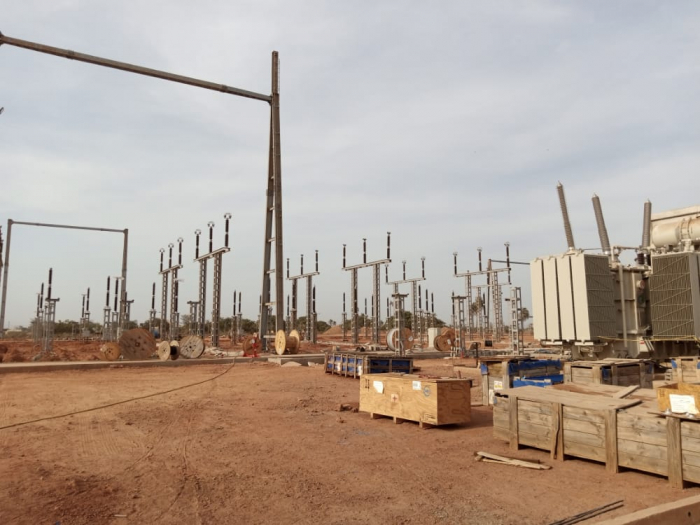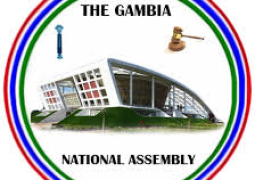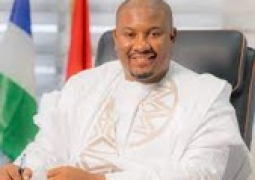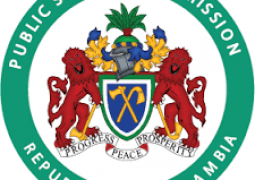
The minister of Environment, Climate Change and Natural Resources and the minister of Petroleum and Energy including officials of the OMVG over the weekend embarked on a site visit to the OMVG projects sites in Lower River Region (LRR) and West Coast Region (WCR) respectively.
Engineers at the Soma sub-station said 90% of their work is completed and equipment has already been tested.
The delegations visited Soma sub-station, Sy-Kunda, where one of the OMVG lines crosses the river and goes to Kaolack. The delegations later proceeded to Ndemban, Bwiam and Brikama. The project comprises four member states, namely: The Gambia, Guinea Bissau, Guinea Conakry and Senegal.
Contractors at the Soma sub-station said a line in Soma sub-station will go to Tanaf-Cassamace and then to Guinea Bissau and Guinea Conakry, while another line in the station will go to Brikama; an additional line will also go to Kaolack.
Ramesh Babur, the contractor from KEC International said: “Most of the work at the sub-station has been completed and most of the poles have already been erected and works are going on at advanced stages.”
The line starting from Soma to Tanaf sub-station in Cassamance, he added, will be completed by 15th June, “Therefore, effective from 15th June you can take power from Kaolack to Soma and Soma to Tanaf.”
Nicola Herbert, project manager Lot 7 of the OMVG 225 overhead line from Brikama to Soma, is also optimistic that the work will be completed soon. He said out of the 250 poles that are needed, 224 have already been erected. “Therefore, this means that we have 70% completed and we are looking to complete in October.”
Lamin Dibba, the minister of Environment, Climate Change and Natural Resources, said: “We have been informed that work on the line from Tanaf in Senegal to Soma is completed and also from Soma to Kaolack is almost completed. The contractor KEC has assured that in the next two months, work will be completed.”
He added that there were some environmental issues including compensation to affected land owners.
“There was not only an environmental problem but also social and economic problems. We have to look at both social and environmental impact and compensate people. So far, according to our records, we have compensated over D17 million as part of our compensation to Gambians whose lands are affected by this project,” he added, claiming that the Department of Forestry has also compensated some people.
“We also have some concerns because some people are coming late when we have already done the database and compensated most of the people.”
This, he added has caused delays in proceeding with the work at the site. However, he was quick to add that so far most of the challenges have been overcome.
Fafa Sanyang, minister of Petroleum and Energy, said government is committed to the provision of quality electricity supply, saying the project has opened up the energy market. “The trend now in the world is countries coming together to solve their electricity challenges. This is by coming together and allowing energy trading.”
“We want to break the boundaries to make sure that there is electricity interconnection. With these power lines, we can get energy from the hydropower from The Gambia River down to Guinea Conakry coming through Guinea Bissau and Cassamace and it also goes down to Senegal and Mali.”
Nani Juwara, the managing director of NAWEC said for many years “our population has been crying about unreliable electricity and very high cost for energy in our sub-region. However, with this project, we can be assured of electricity security in the sub-region and it’s an opportunity for all of us to be able to harness the electricity resources within the West Africa sub-region.”
Their objectives, he said, is to have least-cost energy supply for the population so that we can attract investment into our various economies because there is a direct correlation between energy security and socio-economic development as well.
Rohey John Manjang, regional governor of LRR, said: “The OMVG project is one of the most important projects that we can celebrate because since the colonial time to now, we have been yearning for reliable energy but to no avail. “This is the most important foundation for The Gambia to step on the path to sustainable development.”
Ababacar Ndao, secretary general of OMVG, added "The governments of the four member states are working tirelessly in ensuring that the project is completed on time. At the end of the project, the electricity crisis we are encountering will become the thing of the past."




